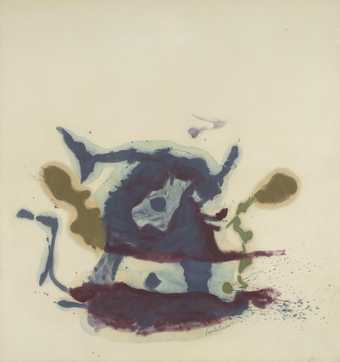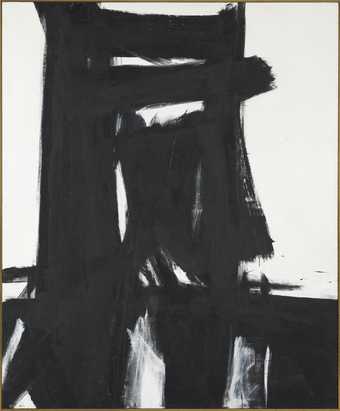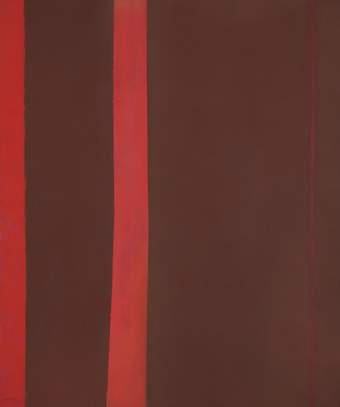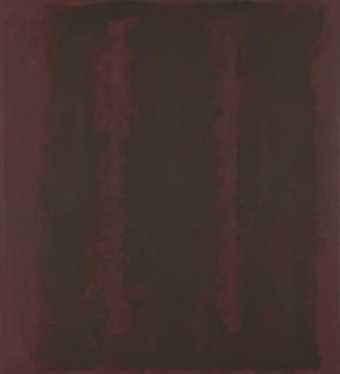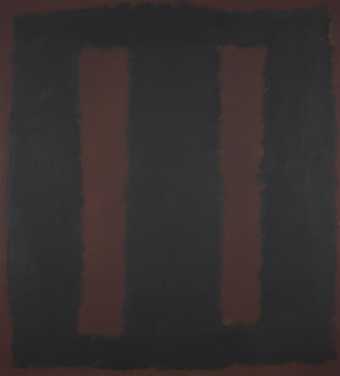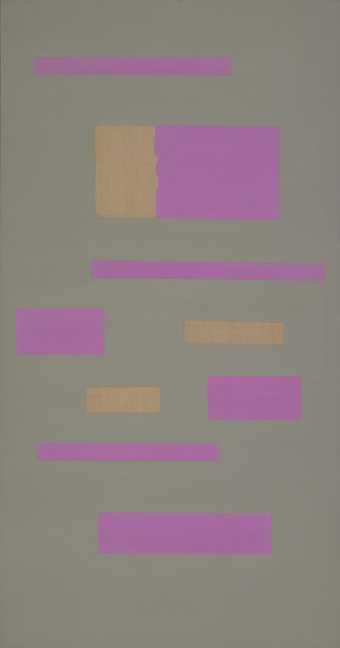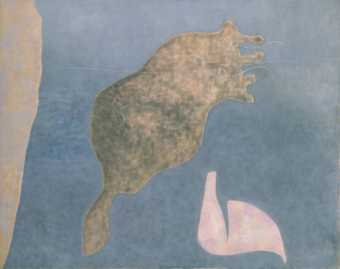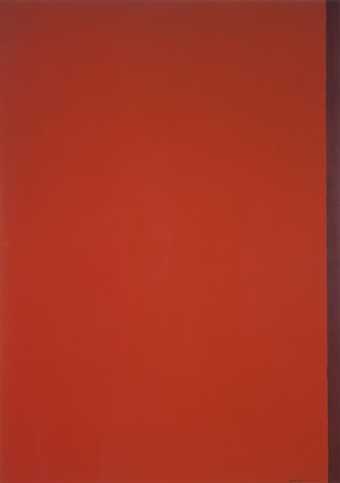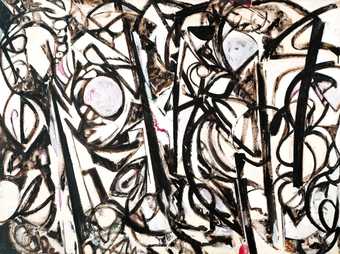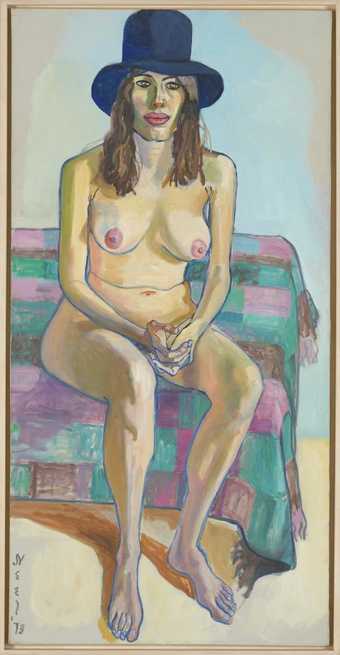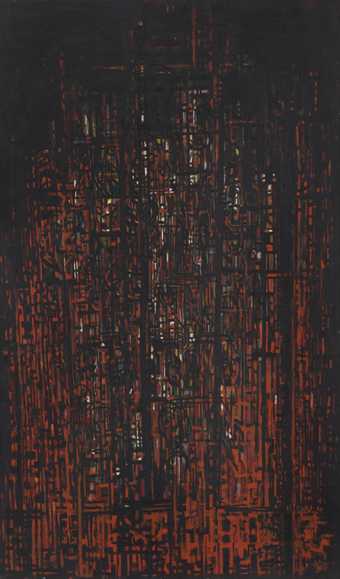
In Tate Modern
Exhibition
- Artist
- Alice Neel 1900–1984
- Medium
- Oil paint on canvas
- Dimensions
- Support: 1066 × 1221 mm
frame: 1266 × 1423 mm - Collection
- Tate
- Acquisition
- Presented by the American Fund for the Tate Gallery, courtesy of Hartley and Richard Neel, the artist's sons 2004
- Reference
- T11922
Summary
Lent by the American Fund for the Tate Gallery, courtesy of Hartley and Richard Neel, the artist's sons 2001
L02334
Dominican Boys on 108th Street, 1955, is one of many portraits of friends, neighbours and especially their children that Neel painted after moving from New York's Greenwich Village to Spanish Harlem with the Puerto Rican musician José Santiago in 1938. In an interview given in 1975, Neel explained her move from the Village to Harlem and what she had expected from it: 'I got sick of the Village. I thought it was degenerating. I moved up to Spanish Harlem with [José]. You know what I thought I'd find there? More truth; there was more truth in Spanish Harlem. And in a sense, there is more truth in the ghettos now than there is in all these festival places.' (Quoted in Susan Rosenberg, 'People as Evidence', Temkin, ed., 2000, p.43.)
Like a large number of other works from this time, Neel probably painted Dominican Boys on 108th Street from memory in her nearby East 107th Street apartment. Children were always considered appropriate subjects for women artists, but the two boys depicted here are far from the romantic ideal of angelic, ethereal, idealised children. They are stocky, self-assured and dignified in their streetwise posturing.
The boys' Hispanic characteristics are not presented as 'exotic' or as a distinguishing feature. They are not painted as anthropologically interesting but rather as children of New York, fitting in with their surroundings because they belong there. They are part of New York as much as the other people depicted loitering in the background, the bright green graffiti and the corner shop with peeling posters advertising soft drinks.
In this sense, Neel's painting of her Spanish Harlem neighbours is quite similar to the aesthetics of American documentary photographers such as Dorothea Lange (1895-1965), Walker Evans (1903-1975) and Berenice Abbot (1898-1991). Neel's subjects are invariably of their time and place, from the artists and eccentrics of Greenwich Village (such as Ethel Ashton, 1930, and Joe Gould, 1933, Tate L2332 and L02449), to the Hispanic children of Spanish Harlem, to the students, artists and intellectuals of the Upper West Side where she moved in 1962 (see, for example, Kitty Pearson, 1973, and Sherry Speeth, 1964, Tate L02446 and L02447). Indeed, as Neel stated herself in 1968, 'I paint my time using the people as evidence.' (Quoted in Rosenberg, 'People as evidence', Temkin, ed., 2000, p.47.)
Further reading:
Patricia Hills, Alice Neel, New York 1983, reproduced p.93
Ann Temkin, ed., Alice Neel, exhibition catalogue, Philadelphia Museum of Art, Philadelphia 2000
Giorgia Bottinelli
March 2002
Does this text contain inaccurate information or language that you feel we should improve or change? We would like to hear from you.
Display caption
In 1938, Neel and her companion José Santiago moved from Greenwich Village to 107th
Street, then known as Spanish Harlem because of its Hispanic population. ‘You know what I thought I’d find there?’ she later said. ‘More truth; there was more truth in Spanish Harlem.’ She often painted friends, neighbours and their children in the area. Neel’s interest in representations of masculinity is reflected in this portrait of two self-assured, streetwise boys. Their identical stances suggest both the assertiveness of adults and the vulnerability of children.
Gallery label, August 2004
Does this text contain inaccurate information or language that you feel we should improve or change? We would like to hear from you.
Technique and condition
The painting consists of one piece of plain weave linen canvas. It appears to have been commercially prepared with a white oil ground prior to stretching. The ground is thinly and evenly applied and the canvas texture remains visible. There is a thinly painted background, in a neutral palette of greys and browns. The brushstrokes are bold and brushy, predominantly in a horizontal orientation, with the paler areas behind the boys in a contrasting vertical direction. The thinly painted background maintains the texture of canvas weave. The sketchy brushstrokes leave areas of ground visible in places. The image appears to have been planned on the canvas and the design laid out with thin black brushed lines. The image is painted wet in wet, with some impasto, introducing bold accents of red and green into the muted background. The artist employs a bold brushy technique painting alla prima. The painting has an opaque, matt finish with no gloss or glazing. It is unvarnished.
The painting is in good condition although it has been restored after a tear. The ground is quite brittle and there are numerous areas of cracking. The tear is mended with a patch on the reverse and has been retouched. A rectangular area corresponding to the patch is visible from the front. There is a significant layer of dust on the surface. The tension is satisfactory if not tight.
Annette King
April 2001
Explore
- architecture(30,960)
-
- features(8,872)
-
- stair / step(514)
- public and municipal(2,385)
-
- shop(399)
- townscapes / man-made features(21,603)
- emotions and human qualities(5,345)
-
- dignity(59)
- vulnerability(311)
- actions: postures and motions(9,111)
-
- standing(3,106)
- boy(1,153)
- black(796)
- USA(622)
- lifestyle and culture(10,247)
-
- urban environment(303)
- Dominican(1)
You might like
-
Helen Frankenthaler Vessel
1961 -
Franz Kline Meryon
1960–1 -
Barnett Newman Adam
1951, 1952 -
Mark Rothko Black on Maroon
1959 -
Mark Rothko Red on Maroon
1959 -
Mark Rothko Black on Maroon
1958 -
Mark Rothko Red on Maroon
1959 -
Mark Rothko Black on Maroon
1958 -
Ad Reinhardt Abstract Painting
c.1951–2 -
William Baziotes Mammoth
1957 -
Barnett Newman Eve
1950 -
Lee Krasner Gothic Landscape
1961 -
John Ward The Newspaper Boys
1960 -
Alice Neel Kitty Pearson
1973 -
Norman Lewis Cathedral
1950

